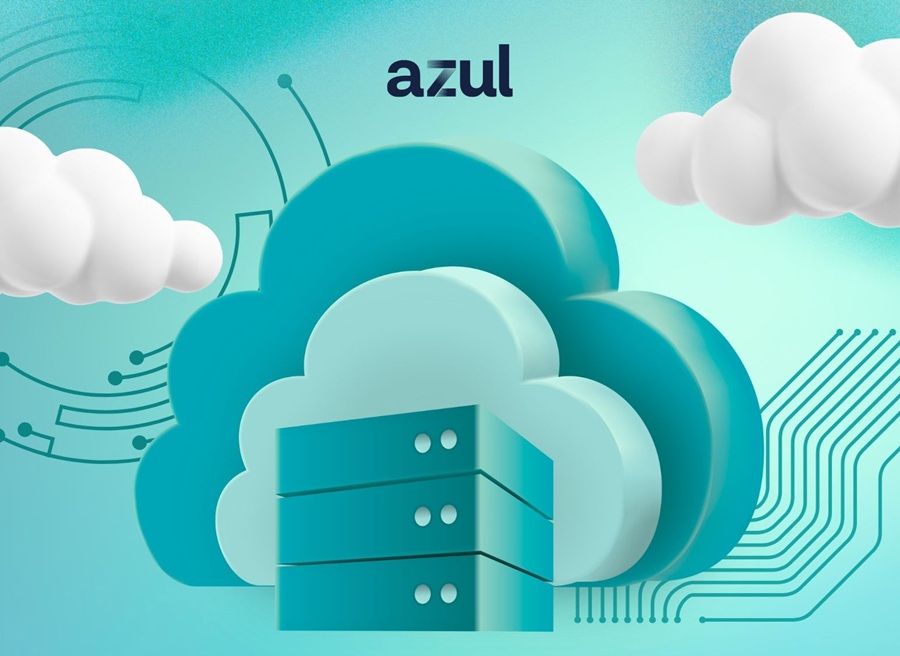SL Corporation's flagship product, RTView Enterprise Monitor, now enables users to view infrastructure metrics for PAAS services and resources in the context of application performance metrics via a new adapter for VMware vSphere data.
RTView also archives these metrics, maintaining a long-term history for trend analysis and alerting.
“VMware has become ‘every-ware,’ making it much easier for an application-centric monitoring product like RTView Enterprise Monitor to provide a complete picture of application health state,” said Tom Lubinski, CEO of SL Corporation. “Performance information associated with infrastructure is now commoditized, streamlining the integration of virtual machine metrics with higher-level component data, and revolutionizing the model with which complex business applications are deployed and managed.”
The new RTView Enterprise Monitor adapter enables users to collect CPU, memory, disk and network data for hosts and virtual machines from VMware vCenter and ESXi servers in real-time. RTView combines these metrics with application performance data obtained from application servers, enterprise message buses and other middleware components to create holistic, single-pane-of-glass views of the entire application environment. This concise visualization provides immediate insight into the level of criticality of a problem, and drill-down support to quickly determine cause and guide resolution.
Since vCenter provides built-in performance metrics, there is no longer a need to painfully install and manage monitoring agents on every machine that hosts application components. Instead, RTView simply connects to vCenter and can readily incorporate data from multiple data centers and thousands of virtual machines.
On top of this, RTView provides an automated, data-driven application dependency model that intuitively visualizes the relationship among applications and their underlying infrastructure and middleware components in order to highlight the business impact and criticality of any problems or performance issues.
An integral part of the system, the included RTView Historian, can be configured to store vSphere metrics in an arbitrary SQL database for capacity planning and historic trend analysis. Trends can also be used to refine alert thresholds. RTView alerts can be integrated with alerts from third-party sources through RTView’s alert management system to help users quickly filter alerts and identify the source of true performance problems.
The lightweight, flexible nature of RTView Enterprise Monitor is also of particular use in complex environments where the monitoring of both cloud-based and on-premise components is required.
Click here to find out more about RTView Enterprise Monitor from SL Corporation
The Latest
As enterprises accelerate their cloud adoption strategies, CIOs are routinely exceeding their cloud budgets — a concern that's about to face additional pressure from an unexpected direction: uncertainty over semiconductor tariffs. The CIO Cloud Trends Survey & Report from Azul reveals the extent continued cloud investment despite cost overruns, and how organizations are attempting to bring spending under control ...

According to Auvik's 2025 IT Trends Report, 60% of IT professionals feel at least moderately burned out on the job, with 43% stating that their workload is contributing to work stress. At the same time, many IT professionals are naming AI and machine learning as key areas they'd most like to upskill ...
Businesses that face downtime or outages risk financial and reputational damage, as well as reducing partner, shareholder, and customer trust. One of the major challenges that enterprises face is implementing a robust business continuity plan. What's the solution? The answer may lie in disaster recovery tactics such as truly immutable storage and regular disaster recovery testing ...
IT spending is expected to jump nearly 10% in 2025, and organizations are now facing pressure to manage costs without slowing down critical functions like observability. To meet the challenge, leaders are turning to smarter, more cost effective business strategies. Enter stage right: OpenTelemetry, the missing piece of the puzzle that is no longer just an option but rather a strategic advantage ...
Amidst the threat of cyberhacks and data breaches, companies install several security measures to keep their business safely afloat. These measures aim to protect businesses, employees, and crucial data. Yet, employees perceive them as burdensome. Frustrated with complex logins, slow access, and constant security checks, workers decide to completely bypass all security set-ups ...

In MEAN TIME TO INSIGHT Episode 13, Shamus McGillicuddy, VP of Research, Network Infrastructure and Operations, at EMA discusses hybrid multi-cloud networking strategy ...
In high-traffic environments, the sheer volume and unpredictable nature of network incidents can quickly overwhelm even the most skilled teams, hindering their ability to react swiftly and effectively, potentially impacting service availability and overall business performance. This is where closed-loop remediation comes into the picture: an IT management concept designed to address the escalating complexity of modern networks ...
In 2025, enterprise workflows are undergoing a seismic shift. Propelled by breakthroughs in generative AI (GenAI), large language models (LLMs), and natural language processing (NLP), a new paradigm is emerging — agentic AI. This technology is not just automating tasks; it's reimagining how organizations make decisions, engage customers, and operate at scale ...
In the early days of the cloud revolution, business leaders perceived cloud services as a means of sidelining IT organizations. IT was too slow, too expensive, or incapable of supporting new technologies. With a team of developers, line of business managers could deploy new applications and services in the cloud. IT has been fighting to retake control ever since. Today, IT is back in the driver's seat, according to new research by Enterprise Management Associates (EMA) ...
In today's fast-paced and increasingly complex network environments, Network Operations Centers (NOCs) are the backbone of ensuring continuous uptime, smooth service delivery, and rapid issue resolution. However, the challenges faced by NOC teams are only growing. In a recent study, 78% state network complexity has grown significantly over the last few years while 84% regularly learn about network issues from users. It is imperative we adopt a new approach to managing today's network experiences ...

